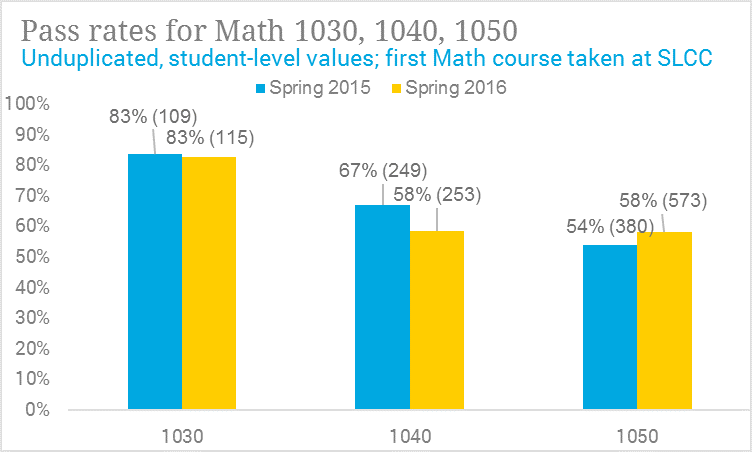MATH Accuplacer Threshold Analysis
Prepared by Jessie Winitzky-Stevens
AAB 355P • 4600 S Redwood Road • (801) 957-4584
August 1, 2016
Abstract
Placement testing is used by colleges and universities across the country in an effort to make students aware of their abilities so they may register for the proper course. Ultimately, the goal is to increase student retention, pass rates, and completion. A student enrolled in a class that is too challenging will fail or drop out; the same student will feel their time and tuition dollars are wasted when they enroll in a class that reviews material they have already mastered. While the goal is straightforward, placement testing has proved to be quite difficult. Salt Lake Community College has utilized the College Board Accuplacer test for many years. Lacking guidelines from the College Board, institutions are left to develop their own thresholds and metrics for advising students on course enrollment. This analysis examines how changes to the Accuplacer threshold for three core math courses affected student success outcomes.
Findings do not support the hypothesis: pass rate for 1030 remained the same; for 1040, it decreased; for 1050, it increased.
Findings do not support the hypothesis: pass rate for 1030 increased slightly; for 1040, it decreased; for 1050, it increased.
(requires College login)

